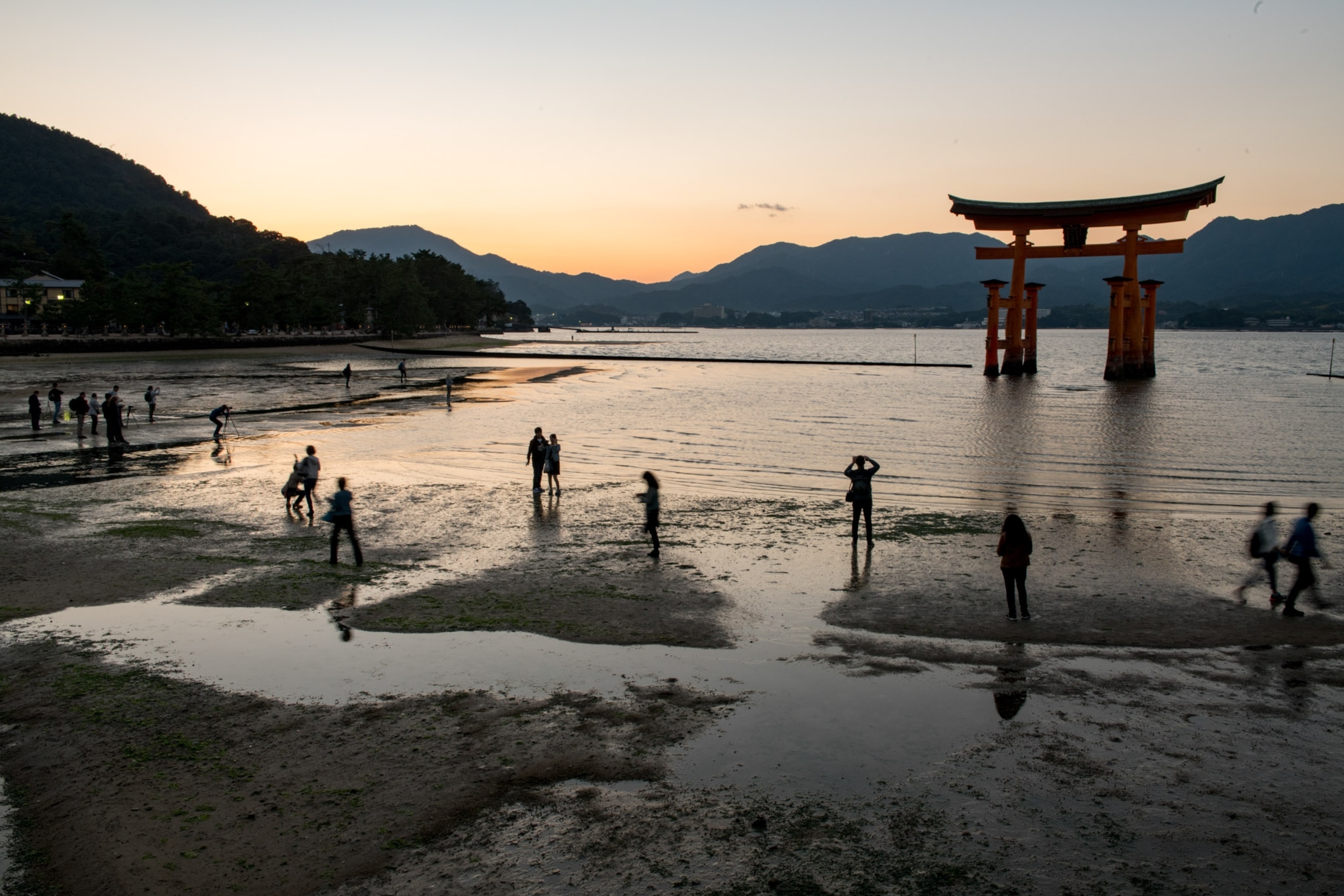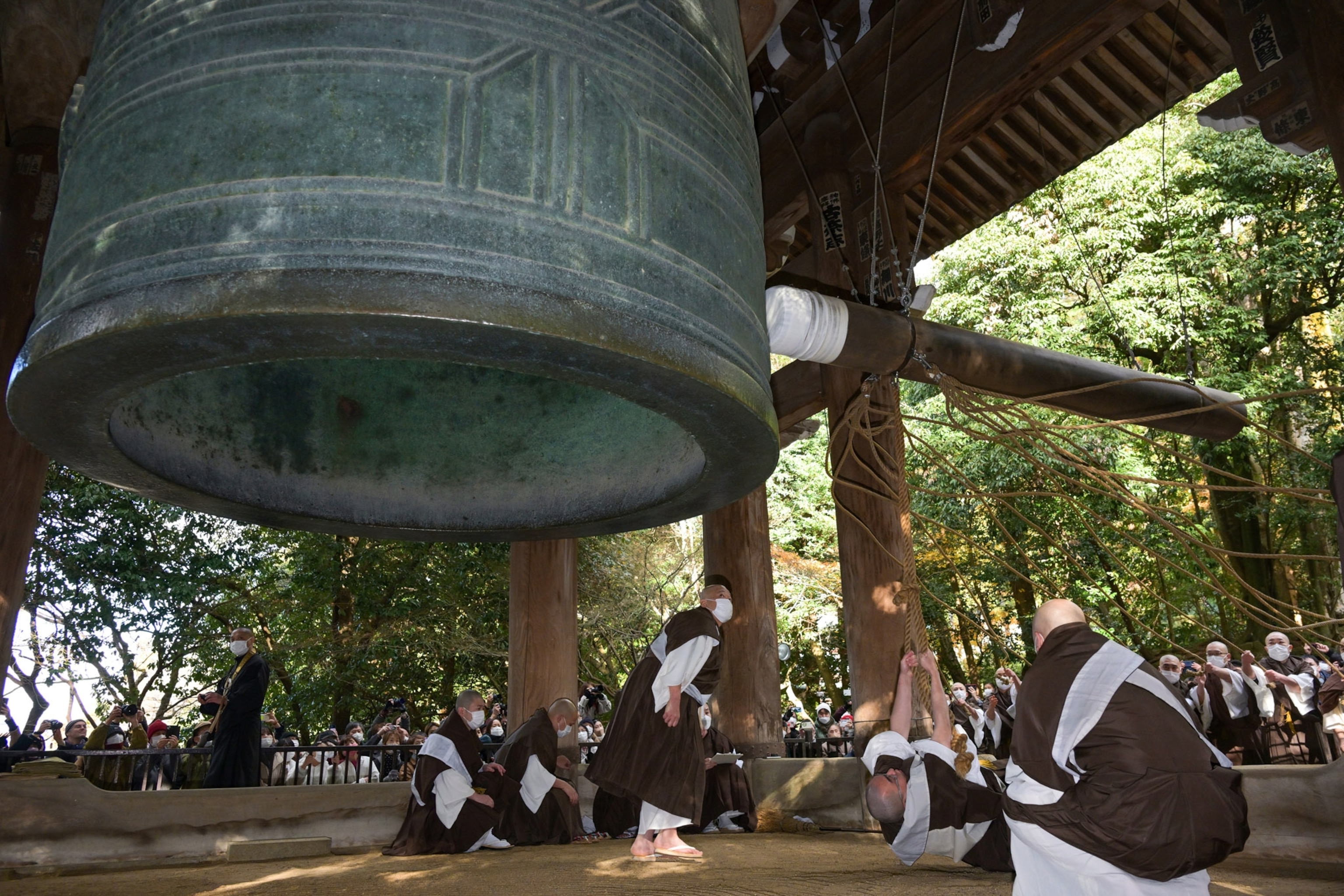
How to visit Japan's shrines and temples—with respect
Why are there Buddhas hidden in some Shinto shrines? Why do temples and shrines often share the same grounds? These sacred spaces have a compelling history.
Over the centuries, the Indigenous Shinto religion and Buddhism, imported from India by way of China, gained prominence in Japan at different times. From the beginning, beliefs intermingled, creating what’s now called shinbutsu shugo. Then, from the end of the 19th century through the first half of the 20th, government policy sought to split the two in an effort to elevate Shinto.
Traces of this history can still be seen all over Japan, from Buddha statues hidden in Shinto shrines in response to Meiji policy, to Shinto imagery at Buddhist temples. In many places, Shinto and Buddhism, with their associated structures, shrines and temples respectively, share the same sacred grounds. Today, there are about 80,000 shrines and 77,000 temples in the country.
As travel to Japan surpasses pre-pandemic levels, visitors who know just a bit of this context can more deeply appreciate these sacred sites. Here are some key histories, symbols, and etiquette to keep in mind to ensure a respectful and enriching visit.


Look out for these features
How do you tell if you’re at a temple or a shrine? The clue is in the name: temples often have the suffix “寺” (-ji or -tera) or “院” (-in), while shrines usually use “神社” (-jinja) or “宮” (-miya or -gu).
Torii, Sanmon and Romon gates: Both shrines and temples have gates. At the entrance to shrines is the torii, which stands open and consists of two posts and one or two upper lintels. At temples, the gate is called sanmon or romon, and is often more functional in that they can be closed. “Both torii and sanmon serve as barriers, symbolically separating the secular world from the sacred realm,” says Toyohiko Ikeda, head priest at Sugawara Shrine in Machida, Tokyo.

Shimenawa: At shrines, you may see a shimenawa, a rope made from rice straw or hemp and accented with paper zigzag. “Its presence signifies that the enclosed area is in a sacred and pure state,” says Takeyoshi Nagai, head priest of Hibita Shrine in Isehara, Kanagawa. But shimenawa are not limited to shrines. You may have seen them on an especially impressive rock in the forest, or even wrapped around sumo wrestlers, especially the yokozuna, or highest ranked wrestlers. “This tradition is believed to be a way for the yokozuna, who perform the stomp before entering the ring, to dispel evil spirits.”
Komainu and Nio guardians: What of the fierce guardians in front of both shrines and temples? At shrines, more often you’ll find komainu, or lion-dogs, while at temples, you’ll likely find Nio statues, fearful warrior types. “Komainu and Nio statues have the role of warding off malevolent forces attempting to enter,” says Ikeda. Both kinds of guardians are usually depicted with one of the pair having an open mouth and the other with a closed mouth, symbolizing the vocalization of “aum.”
Bells: Inside temple grounds you’ll sometimes find a bell tower containing a large bronze bell. “In the old days, when there were no clocks in every home, the bells were used to tell the time to local people,” says Kohei Uchida, the head monk at Shingyoji in Matsue, Shimane. The bells are also used to call monks to prayer. If you visit at temple at midnight on New Year’s Eve, you might hear the “Joya no kane,” the ringing of the bell 108 times to symbolize letting go of the 108 earthly desires and approaching the new year with a pure heart.
Except for shimenawa and torii, versions of these features were all imported from abroad, though of course each culture’s version has its own unique flavor.


Approaching sacred spaces as a traveler
Regardless of religion, any traveler can visit both temples and shrines, says Uchida. However, there are some places that are off limits in both shrines and temples, often with sacred images or objects that are tended only by staff. Photography is frowned upon at some temples and shrines, and allowed in others. If in doubt, it’s best to check with the staff. In shrines, talking should be kept to a minimum, says Ikeda, though children up to the age of seven are considered divine and their making noise is generally acceptable.
When approaching a temple or shrine, the center of the path is reserved for the gods, so mortals should keep to the edge of the walkway. At the gate, it’s customary to offer a greeting to the gods with a slight bow. Before entering the inner precinct, shrines and some temples have a temizuya, a small pavilion with sacred water for ritually cleansing your hands and mouth. Visitors should take care not to let any water they’ve touched go back into the basin, but rather let it run onto the ground. “This act is to cleanse the mind and body, as it is believed that without purification, the gods may not take notice of us,” says Ikeda.
In both cases, non-adherents are welcome to pray, according to Uchida and Ikeda, though the method of prayer differs between temples and shrines. “First visit the main hall of the temple, where the principal image resides,” says Uchida. If there is incense, you can burn some, then place your hands together in silent prayer. At shrines, the ritual for prayer is to bow twice, clap twice, pray, and then bow once more.
But when it comes to visiting shrines or temples, there’s no need to choose. The mixing and matching are an integral part of the culture.
“In Japan, people have cherished both Shinto and Buddhism alike,” says Nagai. “The innate connection to the natural world in Shinto and the structured practices of Buddhism found common ground, fostering a coexistence of the two belief systems.”

Shinto and Buddhism: blurred lines
When Buddhism arrived in the 6th century, beliefs and rituals now known as Shinto were already in Japan. Shinto gods, called kami, include mythological creation gods, deities that control events like rain and rice harvests, as well as spirits that inhabit objects and animals. Evidence of these Indigenous practices, though diffuse, can be traced as far back as around 300 B.C.
Buddhism’s more organized doctrine brought the construction of temples, and Shinto shrines soon followed in their footsteps.
Importantly, neither Buddhism nor Shinto inherently demands that its followers adhere to only one faith. “Shinto is an everyday faith woven into daily life,” says Ikeda. “Within the Buddhist teachings, there was a concept of salvation not found in Shinto.”
This appealed to people, and as Buddhism spread, so did shinbutsu shugo, or the amalgamation of Shinto and Buddhism. In some cases, kami were explained as Buddhas in “disguise,” says Erik Schicketanz, professor of religious studies specializing in Buddhism at Kokugakuin University.
In other cases, kami were recruited as protectors of temples and monasteries, which is why you often see shrines and temples side by side, or even within the same compound. Tokyo’s most famous temple, Sensoji, is an example of this, says Schicketanz. “Right next to Sensoji is the Asakusa Jinja. And that is not by coincidence, because until 1868 they were the same thing.”
1868 brought the Meiji Restoration, a new government in pursuit of a pure national identity. They rolled out a policy of shinbutsu bunri, or the separation of Shinto from Buddhism, and an attempt to elevate Shinto as a state religion.
The legal separation continued until 1945, and in that time, Shinto grew as an overall framework, says Schicketanz. During the period of separation, some temples and Buddhist images were destroyed, and monks were forced to give up their positions or become Shinto priests. Because of the policy of Shinto supremacy, it’s rarer to find Buddhist elements at shrines than vice versa.
Nowadays, a significant number of people claim no specific religious affiliation, says Nagai. “However, for those who do express a religious belief, Buddhism and Shinto are often held in nearly equal regard.”
You May Also Like
Go Further
Animals
- This fungus turns cicadas into zombies who procreate—then dieThis fungus turns cicadas into zombies who procreate—then die
- How can we protect grizzlies from their biggest threat—trains?How can we protect grizzlies from their biggest threat—trains?
- This ‘saber-toothed’ salmon wasn’t quite what we thoughtThis ‘saber-toothed’ salmon wasn’t quite what we thought
- Why this rhino-zebra friendship makes perfect senseWhy this rhino-zebra friendship makes perfect sense
Environment
- Your favorite foods may not taste the same in the future. Here's why.Your favorite foods may not taste the same in the future. Here's why.
- Are the Great Lakes the key to solving America’s emissions conundrum?Are the Great Lakes the key to solving America’s emissions conundrum?
- The world’s historic sites face climate change. Can Petra lead the way?The world’s historic sites face climate change. Can Petra lead the way?
- This pristine piece of the Amazon shows nature’s resilienceThis pristine piece of the Amazon shows nature’s resilience
- 30 years of climate change transformed into haunting music30 years of climate change transformed into haunting music
History & Culture
- When treasure hunters find artifacts, who gets to keep them?When treasure hunters find artifacts, who gets to keep them?
- Meet the original members of the tortured poets departmentMeet the original members of the tortured poets department
- When America's first ladies brought séances to the White HouseWhen America's first ladies brought séances to the White House
- Gambling is everywhere now. When is that a problem?Gambling is everywhere now. When is that a problem?
Science
- Should you be concerned about bird flu in your milk?Should you be concerned about bird flu in your milk?
- Here's how astronomers found one of the rarest phenomenons in spaceHere's how astronomers found one of the rarest phenomenons in space
- Not an extrovert or introvert? There’s a word for that.Not an extrovert or introvert? There’s a word for that.
Travel
- This striking city is home to some of Spain's most stylish hotelsThis striking city is home to some of Spain's most stylish hotels
- Photo story: a water-borne adventure into fragile AntarcticaPhoto story: a water-borne adventure into fragile Antarctica
- Germany's iconic castle has been renovated. Here's how to see itGermany's iconic castle has been renovated. Here's how to see it
- This tomb diver was among the first to swim beneath a pyramidThis tomb diver was among the first to swim beneath a pyramid





